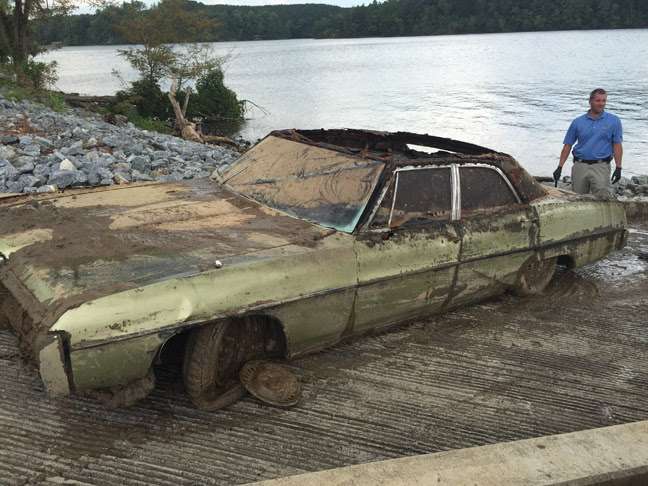
EUFAULA, Ala. — “Closure” was the word used to describe the recent discovery of the whereabouts of a man who had been missing for more than 40 years in Caldwell County, North Carolina.
The man, Air Force retiree Amos Shook, vanished 43 years ago, leaving family members with a lot of questions.
Still unresolved after four-plus decades, Shook’s daughter recently reached out to North Carolina authorities, asking them to revisit the cold case. Obligingly, Caldwell County investigators took to the waters of North Carolina’s Lake Rhodhiss with Humminbird Side Imaging technology, now a staple piece of equipment with Search and Rescue (SAR) teams across the globe.
“Unfortunately, in cases like this, water is often a good place to look. In the ‘70s they sent divers down, but they didn’t locate anything. But with our Humminbird unit we did find the car. I dove down, confirmed it, did some digging, hooked the cable to the car and the sheriff’s department had a tow truck pull it out,” says Jason Holder, Battalion Chief, North Catawba Fire and Rescue.
According to authorities, Shook lived near the lake boat ramp, which led detectives and search and rescue to investigate the area. Holder says North Catawba Fire and Rescue’s boat operator was the first to sweep the area on the evening of Monday, July 20, turning up compelling underwater imagery 50 yards off the bank in nearly 30 feet of water. The area was close to where the boat ramp was located 1970s and where the new boat ramp currently resides.
“We went back first thing on Tuesday and I dove down, verified it was a car and they pulled it out that day,” adds Holder.
As to the specifics of their Search and Rescue program, Holder says they use Humminbird Side Imaging to look off each side of the boat and immediately below the boat via 2D sonar.

“The 997ci SI on our RescueONE Connector Boat is approximately 10 years old, but it still works great. When we found the car we hadn’t even updated the software, which we have done since. For this particular search, we set Side Imaging set to look 60 feet left and right,” says Holder.
“Humminbird Side Imaging is an excellent technology for us. It eliminates a lot of blind searching underwater,” Holder adds. “The water is so murky you can’t see anything when you dive; everything is by feel.”
Once the team had the car located, they set a waypoint on their Humminbird, also dropping a marker buoy so they could image from many different sides of the car while watching the screen and the buoy position in the water.
“After we look at an object sufficiently with Side Imaging we’ll reposition the boat, look at it with 2D sonar and then drop an underwater basket attached to a rope and weight that picks up excellent on the sonar. This allows a diver like myself to so the drop down hand over hand to the anchor and the object,” adds Holder.
Following their recent discovery, Caldwell County investigators dispatched a tow truck to remove the car from the lake. Inside the silt-filled car, investigators found human remains and Shook’s wallet. The remains were taken to the county medical examiner’s office for an autopsy.
Although questions still remain as to what happened, investigators do not suspect suicide or foul play.
This much is certain: After 43 years wondering what happened to their loved one, the family finally has some closure.




